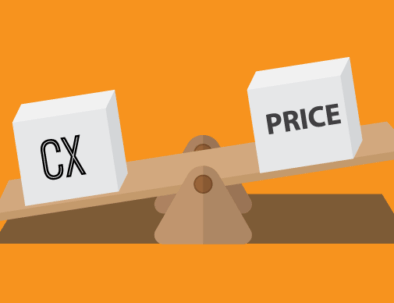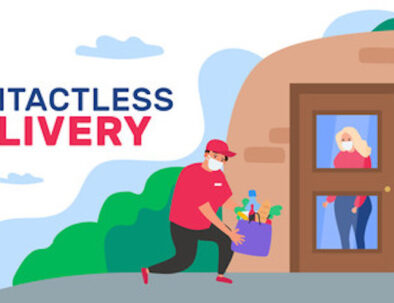B2B sales in the United States are approaching $1 trillion. That dwarfs the size of the B2C eCommerce market. B2B Commerce is still in its infancy as most organizations are still figuring out the basics of strategy and development but one thing is becoming evident, that a platform to manage and scale sales operations is a necessity.
Why Your B2B eCommerce Platform Is Important
The way in which buyers research, interact with your brand, and buy is changing radically. Large bulk buys doing pre-books is nearly dead. As your best customers have shifted their buying habits to more frequent but smaller orders and showrooming is being embraced, is your organization ready?
To succeed online, you must focus on the customer experience. According to Gartner, 89% of businesses soon expect to compete mainly on customer experience. What B2B eCommerce platform you choose affects what type of experience you can deliver to your customer and the end consumer. That’s why choosing the best B2B platform is a crucial business decision.
How to Choose Your B2B eCommerce Platform
Functionality
B2B selling is different than B2C. B2B businesses have certain complexities and requirements when selling to other businesses. Your platform is going to have to meet those special needs. Look at the platforms that can provide functionality like:
1. Responsive Design
Online customers shop across different devices. They might check prices on a phone or tablet, but then complete the purchase on a desktop. Your platform should be able to accommodate this common type of buyer. Your web-content should render properly across multiple devices as buyers are often busy during the day operating their store(s).
Allowing your best customers to conveniently order on the go after hours on any devices makes it easier for your buyers to browse and complete purchases so they can focus on why they got into business to begin with. To enjoy their life outside of work.
2. Self-Service
Buyers and sales associates on the floor want to be able to find information and solve problem themselves. Your eCommerce experience should give them the ability to do that.
Customers should be able to find shipping information, track orders, approve quotes, see real-time inventory availability, and manage their account when they need to. Again, being able to self-serve outside of your operating hours which can vary greatly from retail hours is critical to building confidence with your accounts and makes it easier for buyers to buy from you.
A retail sales associate may be reluctant to showroom and sell your products if they can’t see your available inventory to avoid disappointment and lost commission from a ready to buy consumer.
3. Customer Specific Pricing
A unique need of B2B eCommerce is being able to offer customer-specific pricing and items for sales. Unlike B2C, your price can vary by who the customer is. Your platform should give you the ability to list different prices for each of your customers and availability of items to offer exclusivity to select accounts.
4. Payment Options
B2B buyers purchase differently from B2C customers. Business typically buy larger orders. The orders could also be recurring or whenever inventory is out. Buyers are increasingly gravitating towards using credit cards for payment plus the ability to extend terms also is important. Bottomline, you need flexible payment options that let your buyers reach their business goals.
Give your customers options to pay one or many of their invoices, or even just part of their payment.
5. Sales Rep Integration
Sales Reps are a critical component of many sales organizations. If you have sales reps giving your team access to view/track orders, place orders on behalf of their accounts, and obtain insights to create more compelling in-person sales presentations is critical for winning tactical battlegrounds. Integrating sales reps gives real-time access to data and allows your team to be more responsive to their accounts allowing them to win business quicker.
6. Other Considerations
Using your consumer facing web store for B2B Commerce can impact both channels. For example, buyers do not want to see overly aggressive direct to consumer tactics on your site as it may put them off from wanting to do business with you. Also, consumer promotions, messaging, and even some products may not resonate with your B2B Buyers.
Other considerations to look for include:
- Wholesale specific shipping rates to offer price breaks or minimum order quantities
- Ability to review wholesale orders before placement to up sell buyers
- Accurate multi-warehouse inventory display for quicker more efficient shipping to meet tight customer deadlines and be more responsive
- Detailed reports to obtain a real-time view of the health/vitality of your business
- List or Image view ordering for high volume merchants to place orders on their terms
- Integration of Retail Sales Associates who can view inventory and add to B2B orders for the buyer
Platform Type
When choosing a B2B Commerce web store, you’re going to encounter different types of platforms. You might come across terms such as hosted and cloud-based. These are important factors to consider when choosing a platform.
Hosted, On-Premise vs Cloud-based.
A hosted, on-premise platform means that the software must be installed on-site. You’re in charge of finding and maintaining the servers that the software will run on and likely require technical internal resources.
A fully hosted, cloud-based Commerce platform is hosted by the service providers. You can access you web store from any web browser, as long as you have an internet connection. The difference in these platform types affect many areas such as customization, maintenance, PCI compliance, security, and costs.
1. Open Source vs Out-of-the-Box
An open source eCommerce platform gives you access to modify the platform’s code. This gives you endless creative freedom when designing and configuring your B2B website. As a caution, with open-source platforms code conflicts do occur and can cause more frequent crashing and maintenance. Open source platforms require an internal IT team to maintain and build upon solutions with a larger upfront investment and ongoing costs to maintain staff. If just starting out, an out of the box solution allows you to quickly get up and running. For B2B Commerce software which are becoming commonly used Out-of-the-Box solutions cost are spread amongst many clients making the build vs buy decision more difficult.
2. Maintenance
If you choose a hosted, on-premise eCommerce platform, you’re in charge of maintaining your website. Your responsibilities include maintaining and paying for your servers, dealing with broken software code, and fixing any problems when your site crashes. This is the cost you pay when you manage your eCommerce platform on your own.
Cloud-based platforms typically set-up and host your eCommerce site. If there’s an update to the software, they’ll make it automatically. If something crashes, they’re monitoring site performance 24×7 and it’s their responsibility to fix it.
Deciding on which type is best is a matter of how much control you want versus the added responsibilities.
3. PCI Security
PCI compliance is a must for eCommerce sellers. It ensures that you’re safeguarding your customers’ payment card information when they make a purchase. Depending on your platform type, this could be included or part of your responsibilities and open your organization to security breaches.
Some cloud-based platforms provide this security for you because the data is on their servers. They’re in charge of managing it. For other hosted solutions, the B2B seller is in charge of making sure that all requirements for PCI compliance are met. You’ll have to ensure your payment gateways meet industry standards.
Be sure to ask the eCommerce provider how PCI compliance works.
4. Cost
Lastly, different platform types greatly affect costs and how they add up. A hosted solution will typically cost you more. You’ll have to pay for the license for the software, maintenance of server hosting, developer costs, and your own in-house IT team.
For fully-hosted, cloud-based SaaS or PaaS platforms, you typically pay a monthly fee for hosting, security, maintenance, and support. They will all be bundled together and will come out to a lower monthly cost.
Understand what services you’re paying for and if it’s worth the price. Often if a solution is able to meet 90% of your objectives it can be more efficient to work within the confines of a vendor rather than deal with headaches especially if that vendor is willing to close the 10% gap for your business. Considering if it is worth your time to invest in a solution will bring the lowest total cost of ownership to your organization.
Integration
Besides functionality and type, your eCommerce platform also needs to integrate well with your other systems. This ensures that your online and offline channels can work harmoniously together. Integration enables you to be a more efficient multichannel seller, and provide a better customer experience for your customers.
When searching for a new platform consider how it will work with your ERP system. Can it easily handle information that comes for your suppliers? Will it sync your online and offline inventory as well as Accounting systems allowing you to scale sales operations.
What to Do Next
Choosing the right B2B Commerce platform for your business takes time and research. It’s an investment in your business. Your platform should help you achieve your strategy in both the short-term and long-term. Like B2C Commerce, just because you build it, doesn’t necessarily mean buyers will login and place orders. Consider strategies on how you can make your B2B more compelling for buyers to visit as part of their regular workflow.
Keep reading more about B2B eCommerce:





